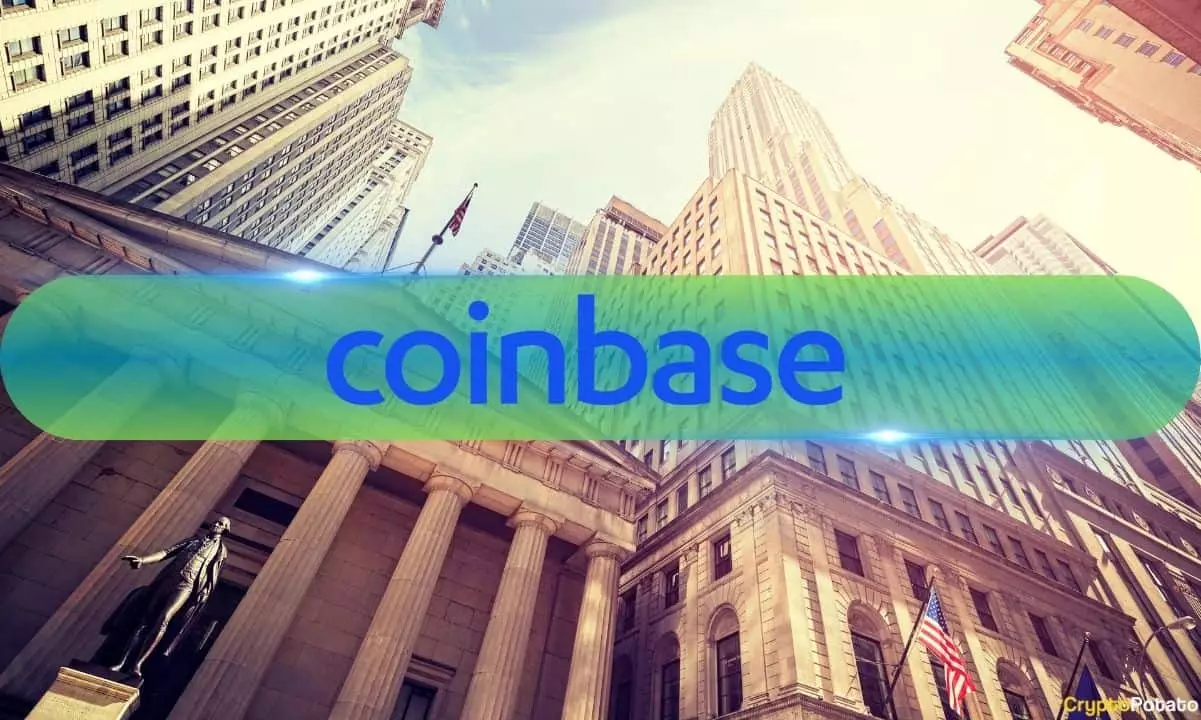Coinbase has firmly established itself as the preeminent publicly traded blockchain entity, boasting an impressive market capitalization of $71.2 billion as of February 8, 2025. This figure not only highlights the company’s monumental stature within the industry, but it also underscores the growing prominence of blockchain technology in the financial ecosystem. To put Coinbase’s size into perspective, its nearest competitor, Galaxy Digital, lags significantly with a market cap of $6.7 billion, making Coinbase more than ten times larger. The significance of this disparity reveals a profound insight into the dynamics of the blockchain market, where Coinbase emerges as a leader among a fragmented field.
According to recent evaluations, Coinbase’s market cap eclipses the combined total of the next nine largest blockchain firms, which together account for only $33.2 billion. This reinforces the notion that while multiple firms vie for attention in the blockchain arena, much of the market’s valuation continues to hinge upon the performance and strategies of a handful of major players. Among the 46 publicly traded companies involved in blockchain, Coinbase uniquely represents the exchange sector, comprising merely 2.2% of the total yet capturing a substantial share of overall value within the space.
This concentrated market structure raises questions about the sustainability of such dominance. As new technologies like artificial intelligence (AI) and Web3 gain traction, companies within the sector are adapting. This has led to an increasing number of blockchain firms diversifying their operations beyond cryptocurrency trading and mining. While Bitcoin mining remains the most prevalent activity—emphasized by the reality that 25 out of the largest 46 firms are involved in mining—the lucrative opportunities afforded by AI and Web3 solutions are hard to ignore.
Following Bitcoin’s fourth halving event, which saw block rewards diminish from 6.25 BTC to 3.125 BTC, a notable shift in the strategy of mining firms has emerged. Key players such as Core Scientific, Hut 8 Mining, and TeraWulf are not just content with their traditional functions; many are looking to leverage their existing expertise in infrastructure and high-performance computing. This pivot toward creating AI-driven data centers and cloud computing resources illustrates a broader trend: mining companies are keen to embrace technology that enhances their operations while also hedging against market volatility.
Despite the growing influence of this diversification, the mining sector’s market cap stands at $31.7 billion—a substantial figure in its own right but subdued compared to Coinbase’s market influence. Leading firms like Marathon Digital Holdings and Riot Platforms hold significant shares but collectively, they only represent a fraction of the total blockchain market cap, which is approximately $199.5 billion. This figure accounts for just a small percentage—5.8%—of the overarching cryptocurrency market capitalization that approaches $3.45 trillion.
Interestingly, MicroStrategy emerges as a pivotal force within the landscape, boasting an impressive $97.7 billion market cap. Under Michael Saylor’s stewardship, the company adopts a distinctive strategy, using debt to amass Bitcoin with the intention to leverage price appreciation. This approach not only illustrates MicroStrategy’s innovative perspective but also signifies the potential for maximizing returns in an evolving financial environment. Removing MicroStrategy from the calculation, the remaining blockchain companies across the public markets reflect a combined market cap of $121.9 billion, with Coinbase claiming an astonishing 63.6% of that total.
As Coinbase continues to thrive, the broader blockchain landscape is undergoing significant changes spurred by technological advancements and shifting market dynamics. The future of blockchain companies appears interconnected, with established players expanding into novel territories and new entrants seeking to carve out niches amidst increased competition. Coinbase stands out not only for its current market dominance but also as a potential harbinger of trends likely to influence the industry in the years ahead. The next chapter of blockchain’s evolution seems poised to unfold, with new paradigms of technology and finance shaping the future of how we perceive and utilize blockchain solutions.

